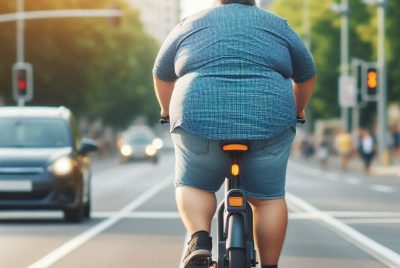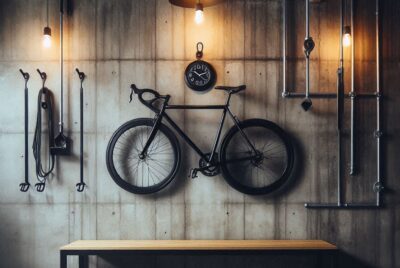Mountain Biking Backpack Guide: Essentials & Tips
*We may earn a commission for purchases made using our links. Please see our disclosure to learn more.
Mountain Biking Backpack Essentials for Every Ride
Mountain biking is an exciting way to explore the outdoors and push your physical limits. Having the right gear can make all the difference, and a good mountain biking backpack is essential. These backpacks are designed to carry all the necessities you need for a ride, from water to tools, without weighing you down or shifting uncomfortably on your back.
Mountain biking backpacks come with various features, such as hydration systems, multiple compartments, and reinforced materials. The key things to consider when choosing a backpack include its size, weight, hydration compatibility, and storage options. Comfort is also critical, so look for adjustable straps and a design that fits well with your body shape.
Choosing the right mountain biking backpack can make your rides smoother and more enjoyable. I tested several options to find the ones that best meet the needs of avid mountain bikers.
Top Mountain Biking Backpack Selections
I’ve picked out the best mountain biking backpacks for you. Here are the top selections that offer durability, comfort, and plenty of storage.
CamelBak Rogue Light Hydration Pack
This hydration pack is a fantastic choice for mountain biking with its lightweight design and ample storage.
Pros
- Durable and light materials
- Efficient ventilation with Air Support Light back panel
- Secure pockets for essentials
Cons
- Straps may feel uncomfortable initially
- Limited front storage options
- Size may be small for some users
I recently took the CamelBak Rogue Light Hydration Pack on a mountain biking trip, and it held up really well. The lightweight and durable material felt comfortable throughout the ride. The Air Support Light back panel kept my back from getting too sweaty, which I appreciated on warmer days.
The ventilated harness was a pleasant surprise. It added to the comfort while maintaining breathability. The integrated tool organization made it easy to find what I needed without fumbling around. The secure zippered pocket was perfect for my keys and phone, keeping them safe and accessible.
One issue was the shoulder straps. Initially, they seemed a bit uncomfortable and twisted easily, but after a few uses, they felt much better. Also, the pack’s size might be a bit small for those who need to carry more gear. Overall, it’s a reliable and convenient choice for any biking adventure.
Osprey Katari 3 Hydration Pack
If you need a reliable and comfortable hydration pack for short rides, the Osprey Katari 3 is worth considering.
Pros
- Lightweight and easy to carry
- High-quality material ensures durability
- Comfortable fit with good ventilation
Cons
- Limited storage capacity
- Magnetic clasp occasionally detaches
- Chest strap might feel tight for larger users
The Osprey Katari 3 is fantastic for short rides when you need to carry water and a few small essentials. The lightweight design makes it easy to wear, and it doesn’t feel bulky on your back. Ventilation is excellent, thanks to the airmesh-covered back panel and soft-edged shoulder straps.
I found the hydration system simple to use. The included 2.5-liter reservoir is easy to fill and clean, and the magnetic sternum strap keeps the bite valve handy. Some users might find the magnetic clasp detaches occasionally, but it generally stays in place during rides.
One downside is the limited storage. I could only fit my phone, keys, and a few snacks. If you need more space for gear, you might want a larger pack. The chest strap can also be a bit tight for broader chests, which may affect comfort.
Overall, the Osprey Katari 3’s quality and design make it a great choice for quick rides. If you’re looking to travel light and stay hydrated, this pack is a solid option.
CamelBak M.U.L.E. Pro 14
A dependable and comfortable choice for mountain biking, offering great ventilation and storage.
Pros
- Excellent ventilation with Air Support Back Panel
- Lightweight and breathable mesh harness
- Compatible with Impact Protector for added safety
Cons
- Main compartment may feel small for some users
- Higher price compared to other backpacks
- Can be bulky for lighter rides
I recently tried out the CamelBak M.U.L.E. Pro 14 on a mountain biking trip, and it did not disappoint. The Air Support Back Panel was a game-changer, keeping my back cool even on long, challenging trails. The body mapping technology really does help in targeting heat build-up areas effectively.
The 3D Vent Mesh Harness added to the comfort with its lightweight and breathable design. I barely felt the load, and the hip belt with cargo pockets made it easy to access essentials without stopping. There’s also a neat spot to stow your helmet securely when you aren’t riding, which I found quite handy.
Although the backpack’s main compartment feels a bit tight, the other features make up for this. Its storage capacity might seem limited, but it’s optimized to keep everything secure and in place. Despite the high price, the added stability, comfort, and safety features make it a solid investment for serious bikers.
For those looking to upgrade their gear with something reliable and thoughtfully designed, this backpack is worth considering. The ease of planning a full day’s ride with its organized compartments and hydration system enhances the overall biking experience.
CamelBak H.A.W.G. Pro 20
This backpack is perfect for long mountain bike rides thanks to its great storage and comfort.
Pros
- Excellent ventilation with Air Support Pro Back Panel
- Ample storage space for gear and hydration
- Lightweight and durable design
Cons
- Higher price point
- Straps might feel thin
- E-bike battery compatibility concerns
The CamelBak H.A.W.G. Pro 20 stands out for its great combination of storage and comfort. The Air Support Pro Back Panel uses body-mapping tech to keep you cool during long rides. I found myself barely breaking a sweat on a tough climb.
Its cargo capacity is impressive, easily carrying gear for a day-long trip. The 3-liter hydration reservoir is a lifesaver for keeping hydrated. Plus, the lightweight materials mean it doesn’t weigh me down.
The hip belt cargo pockets are a game-changer for quick access to snacks or tools. While it is a bit pricey, the features and comfort offered make it worth considering for serious bikers. The straps are thin, which some might not like, but overall, it’s a solid, well-thought-out pack.
CamelBak M.U.L.E. 12 Hydration Backpack
This pack is perfect for mountain bikers who want a balance of comfort, storage, and hydration.
Pros
- Comfortable even for long rides
- Excellent hydration system with magnetic tube trap
- Plenty of storage space
Cons
- Straps might feel flimsy to some
- Screw-in lid can be tricky
- Could have better structure
Using the CamelBak M.U.L.E. 12 on my latest mountain biking trip made a world of difference. The Air Support Back Panel with Body Mapping Technology kept my back cool, which was especially noticeable on the hotter trails. The lightweight and breathable 3D Vent Mesh Harness provided great comfort throughout the day.
The hydration system is a standout feature. The magnetic tube trap keeps the tube secure and easy to access whenever I need a drink. I never had to fumble around trying to find the tube, even during bumpy rides.
However, the straps did feel a bit flimsy at times, especially when the pack was fully loaded. Also, the screw-in lid for the hydration reservoir could be cumbersome, sometimes making it difficult to open and close. Despite these minor issues, the overall functionality and comfort make this pack a great choice for mountain biking enthusiasts.
Mountain Biking Backpack: Buying Guide
When choosing a mountain biking backpack, I always focus on a few key features. These features make a big difference in comfort and functionality.
Capacity
The first thing to consider is capacity. This depends on how long your rides are. For short rides, a smaller bag (10-15 liters) is enough. For longer rides, I recommend a larger bag (20-30 liters).
Weight
Weight is important. A heavy backpack can make riding uncomfortable. I look for lightweight materials that still offer durability. Every ounce counts when you’re on the trail.
Fit
A good fit is essential. I prefer backpacks with adjustable straps. This helps in distributing the weight evenly. Padded shoulder straps and a waist belt enhance comfort.
Hydration System
A hydration system is key. Many backpacks come with built-in hydration bladders. I like designs with an easy-to-access drinking tube. This keeps me hydrated without having to stop.
Storage Compartments
Different compartments help to organize items. I like having separate pockets for tools, snacks, and a phone. A dedicated compartment for the water bladder keeps things organized.
Ventilation
Ventilation is a must-have feature. Look for designs with mesh panels or channels. This keeps the back cool and reduces sweating during rides.
Durability
Durability cannot be overlooked. I look for backpacks made from strong, tear-resistant materials. Water-resistant coatings add extra protection in wet conditions.
Safety Features
Safety features include reflective accents and a built-in whistle. These features can be critical when riding in low-light conditions.
| Feature | Importance | Feature |
| Capacity | Determines how much you can carry | Capacity |
| Weight | Keeps the backpack light and easy to carry | Weight |
| Fit | Ensures comfort during long rides | Fit |
| Hydration System | Keeps you hydrated on the go | Hydration System |
| Storage Compartments | Organizes your gear efficiently | Storage Compartments |
| Ventilation | Keeps you cool and comfortable | Ventilation |
| Durability | Ensures long-lasting use | Durability |
| Safety Features | Adds extra protection while riding | Safety Features |
By focusing on these features, I can find a mountain biking backpack that suits my needs. Happy riding!
FAQs About Your Mountain Biking Backpack
When picking a mountain biking backpack, it’s important to consider features, size, weight, comfort, and protection. Here, I’ll provide direct answers to common questions about these backpacks.
1. What are the essential features to look for in a mountain biking backpack?
Look for hydration systems, lightweight materials, multiple compartments, and air ventilation. These features will help keep you hydrated and comfortable on the trail.
2. How do I choose the right size backpack for mountain biking?
Select a size based on the length of your rides and the gear you need. For short rides, use smaller packs. Longer rides require larger packs with more capacity.
3. What advantages do backpacks with back protectors provide for mountain bikers?
Backpacks with built-in back protectors offer extra safety. They help reduce the risk of injury by providing a cushion during falls or accidents.
4. Are there lightweight backpack options designed specifically for mountain biking?
Yes, there are lightweight options made with high-strength materials. These packs minimize weight without sacrificing durability or functionality.
5. How can I ensure comfort and stability in a backpack while mountain biking?
Choose packs with adjustable straps, padded backs, and waist belts. These features help distribute weight evenly and keep the backpack stable while riding.









